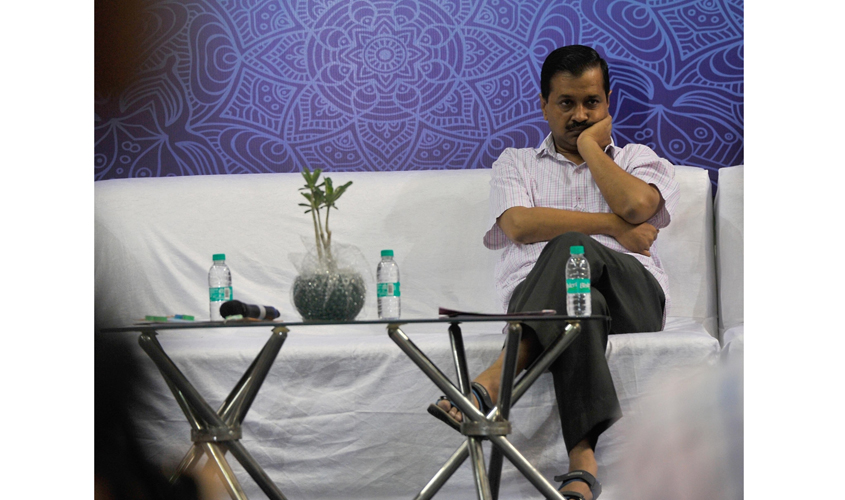The conclave is also meant to be an explicit exhibition of strength by the supporters of Chief Minister Arvind Kejriwal, who has been accused of financial and administrative irregularities by his erstwhile colleague Kapil Mishra, along with a handful of his followers. Kejriwal enjoys an overwhelming support in the party he had set up in the wake of the Anna Hazare movement against rampant corruption some years ago. He was re-elected as its convener last year and enjoys the unflinching backing of the National Executive, which is a 26-member body and includes his deputy Manish Sisodia, besides Meera Sanyal, Kumar Vishwas, Ashish Talwar, Sanjay Singh, Raghav Chadha, Gopal Rai, Ashutosh, Atishi Marlena and Bhagwant Mann, amongst others.
There is an increasing recognition in the party that its experimentation in Goa during the Assembly elections was as futile as its efforts to make it to the national platform in the 2014 Parliamentary elections, when Kejriwal had pitted himself against Narendra Modi in Varanasi. This was in addition to his fielding candidates in various parts of the country. However, the party is content with its performance in Punjab where it is the primary opposition to the Congress and has seven more seats than the Shiromani Akali Dal-BJP combine. Though the AAP was at one stage seen as the party expected to unseat the Akalis, yet it ended up securing 20 odd seats in the 117-member Assembly.
Initially, the party’s detractors described the Punjab outcome as a colossal setback. Nevertheless, the cadres have come to terms with the result, and believe that it is the beginning of the organisation’s growth since the two-and-a-half-month Congress government is already trying to address a mining scam, which seems to have tarnished its image. A key AAP functionary stated, “Things are changing very fast. Who would have thought that a senior leader like Parkash Singh Badal would be a member of the Assembly without being either the Chief Minister or even the Leader of Opposition? In the current Assembly, he is neither.”
Sources said that the dismal results in the Delhi civic elections have been a wake-up call for Kejriwal, who at one time was openly toying with the idea of going to a state like Punjab if his party had secured a majority. The reality principle is apparently at work and the senior leadership realises that AAP’s expansion cannot be at the expense of its government in Delhi. The poll percentage of the AAP has taken a drastic nosedive, while the BJP was able to secure convincing victories in the three municipal bodies.
The AAP’s long time calculation is that the Congress, which had secured 22% votes in the elections, was tottering, and thus would crumble just before the next major election. The majority of its vote share would transfer to AAP as it had during the 2015 Assembly elections, enabling it to win 67 out of the 70 seats in the national capital. Therefore, the attempt by AAP cadres would be to wean away the Congress votes to the party’s fold in order to combat the growing influence of the BJP.
The National Executive is going to deliberate on what it deems as political vendetta of the Central government against the city’s popularly elected government. The idea is to expose the BJP’s designs, while concurrently projecting the measurable achievements of AAP. The improvement of basic facilities in government run schools leading to better results, as well as the success of mohalla health clinics and the easy availability of free medicines in hospitals would also be highlighted.
Kejriwal, who had handed over the reins of the administration and governance of Delhi to his colleagues, so that he could spend more time in formulating AAP’s expansion plans, is now vigorously pursuing a hands-on approach and has started taking interest even in minute matters. This re-styled stance is reflective of the new strategy of his party, which wants to ensure that its hold over Delhi becomes stronger by the 2019 Lok Sabha elections. Prior to that, the blueprint is to keep the flock together since the BJP has various game plans to poach on important functionaries and elected representatives ahead of the Rajya Sabha elections in January 2018, when AAP is expected to win all the three seats, while making its debut in the Upper House. The new mantra is going to be better governance and people-connect. In this context, the Delhi government is examining the fallout of GST implementation in the national capital, where the traders are already up in arms. The GST is being viewed as an instrument to repay the BJP back in its own coin as it would end up leaving the saffron brigade cold-shouldered and spurned by its own core supporters.
The AAP is also well aware that it will contribute to the overall Opposition plan for the Presidential polls due later this month. The party has 10,000 votes and by no means will allow them to be squandered away without putting up a stout fight against the BJP nominee. Essentially, the National Executive would prepare the workers and activists for the new approach of the leadership towards national politics and its objective of emerging more robust in both Delhi and Punjab, while in the same breath searching at ways and means to effectively erode the BJP in Gujarat.

